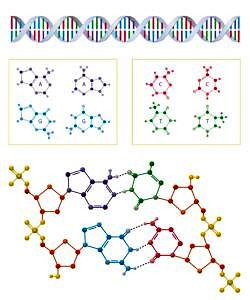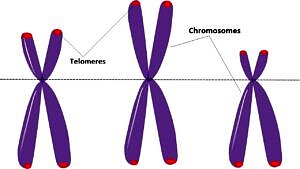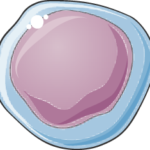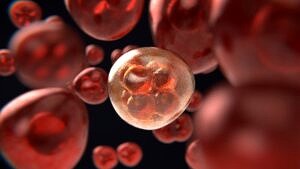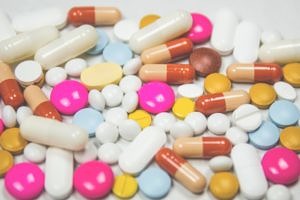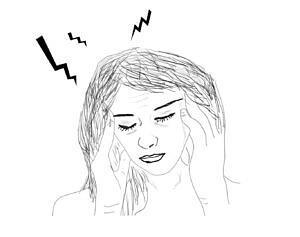Some migraine sufferers may no longer need any medication at all with some changes in their lifestyle. If you can manage to find out which is the culprit of your migraine attacks you may be able to control and prevent them in a large number of cases. One of these culprits can be certain types of food that affect you. Migraine is determined by environmental factors and their interactions with the patient’s genetic constitution.
Food intolerance versus food allergies in migraine
It is clear that certain foods may trigger migraine attacks in some people, but even the amount taken, or time exposure can be different depending on the patient. Even worse, that specific food may only cause headaches or other symptoms occasionally. For example, a patient may have a headache when he or she eats chocolate, but it may only happen when he or she eats a certain high amount and in combination with other factors or types of food. Interestingly food withdrawals may also prompt headaches, as it is the case of caffeine for some patients. It depends on your genetic constitution and other several factors combined.
Food intolerance is far more common than food allergy, the first representing approximately 20% of the population whilst the latter is at the utmost 4%. The immune system may cause food intolerance as well as food allergies, but the mechanism is different, and here lies the key to this food problem some migraine sufferers face. Non-immunological factors are also thought to be involved in migraine attacks prompted by food intolerance.
When there is a food sensitivity what it happens is that the immune system of your body reacts releasing IgG antibodies that are supposed to defend you from the “intruder”, which in this case is a component of the food you are eating, just as it happens when a dangerous germ invades your body. IgG antibodies are the most common among the five classes of antibodies in the bloodstream. IgG antibodies are produced by plasma B cells. It may take even some days before you realize that your body is reacting to this “intruder”. This is the reason why it is sometimes so difficult to find out which one is the food that is triggering your migraine attacks. If you consider that it may be just some component of a particular food, then things become all the more so complicated. In tests the absence of IgG antibodies means that there is no immune response to a particular type of food. Therefore, those migraineurs that avoid taking foods for which IgG antibodies are tested positive should notice a significant improvement.
Food allergies are different because in this case the immune system releases IgE antibodies, which also defend you from potential harmful “intruders”. IgE antibodies are also produced by plasma cells and are present in the bloodstream in small quantities. Food allergies are a more serious matter because often the body’s reaction is immediate and in extreme cases it may even be fatal. Headaches in food allergies are less common as symptoms are more related to hives or inability to breathe properly, but headaches do happen. Other symptoms may include digestive problems, chronic diarrhea or constipation, runny nose, and fatigue. On the other hand, determining which food causes your migraine attacks is somewhat easier, but still some food allergic reactions are not accurately diagnosed as these reactions are often identified as Irritable Bowel Syndrome (IBS). IBS and migraine are considered to be related by some scholars.
CRLifeSc forms part of an affiliate program to maintain this website. Want to know what’s causing your food intolerance or allergy? – intolerancelab
The main migraine triggers
Many types of foods may trigger headaches even in people who are not migraine sufferers as such. The main problem to identify the cause is that not always the specific food triggers a headache or a migraine attack.
Foods that may trigger headaches include among others:
- Wheat or gluten. Wheat is thought to be one of the commonest foods that prompt reactions.
- Orange or citric products. Orange could be the second most common food for intolerance cases.
- Eggs. Eggs are rated as the third most common food causing intolerance.
- Tea and coffee. Tea and coffee are ranked in fourth positions as the one of the commonest foods that prompt reactions.
- Wine. Allergic reactions are rare when drinking wine, but they may happen. Symptoms often include nausea and vomiting, which are common among migraine sufferers, as well as others such as runny nose, nasal congestion, rash, etc.
- Aged cheese. Allergies in aged cheeses are often related to the bacteria and fungi found in rinds because they produce large amounts of histamine. Histamine plays a role in the immune system prompting inflammatory responses. These microbial components in the surface of aged cheese take part in the ripening process.

Cheese aging process - Chocolate. This is generally caused by a component in chocolate as allergies to cacao are rare.
- Foods that are high in fat. The amount of fatty food eaten may affect certain individuals at different levels.
- Dairy products. Lactose and casein are the common culprits for this type of food intolerance. Lactose is a type of sugar, and casein is a protein found in milk.

Dairy products could be the culprits of your migraine episodes - Beef. Some people are affected by beef intolerance because they may have been bitten previously by a tick which has formerly fed from other mammals. The tick takes in a carbohydrate molecule that is then transmitted to a person when being beaten, prompting the person’s immune system to produce IgE antibodies which are specific to this carbohydrate molecule that is present in beef, lamb or pork.
- Bananas. The intolerance is linked to the latex, which also happens in nuts and other plant fruits. Some banana proteins are like latex, which often causes food allergies.
- Corn. Some researchers believe that corn allergy is underdiagnosed and that the percentage of people who suffer from this type of allergy could be higher than expected reaching approximately 5% of certain populations. Corn contains a protein that is called zein that is thought to be the “offender”.
- Sugar cane. Sugar cane is less processed than refined sugar, and some components that could prompt allergies may remain.

Sugar cane juice - Yeast. This is a fungus that is present in some types of food such as breads, muffins, croissants, biscuits, or some cereals that contain malt which has been fermented with yeast.

Bread yeast - Food additives. The best examples are aspartame and monosodium glutamate, which are known to cause migraine and cluster headaches.
How to deal with migraine food triggers
The usual way to find out which foods may trigger your migraine attacks is by using an elimination diet, which simplistically explained consists of removing those foods that you think could be the culprits to add them some weeks later one by one. This is not an easy task because in the case of food intolerance the food reaction may take several days after the intake with variable results, and thus the whole process may take too long. Your age, sex. genetics and environmental factors also play an important part in the outcome. You are strongly advised to do this under the supervision of your doctor or a dietitian because the elimination diet involves certain risks of malnutrition.
Scientists are working on the epigenetic diet. Scholars believe that it is possible to design a tailored diet for some diseases which could include migraine. These tailored diets target specific biochemical paths or molecules in your metabolism or even specific structures at a cellular level making use of the knowledge developed in epigenetics. The use of folate (folic acid) as a supplement has proved beneficial in migraine. This B vitamin takes part in DNA methylation, which is one of the main epigenetic processes.
CRLifeSc forms part of an affiliate program.
Ketogenic or low glycemic diets are often suggested by scientists and dietitians for migraineurs. Ketogenic diets are a type of epigenetic diets. In these diets, sodium intake must be personalized.
During the last years intestinal flora has become a center of attention and possible explanation for several medical disorders. Migraine is often associated to gastrointestinal problems that include vomiting and nausea. Probiotics could modify gut microbiota reducing gut permeability for pro-inflammatory substances that impact on the trigeminovascular system. Scientists are studying these products to be included in the diet for migraine sufferers.
CRLifeSc forms part of an affiliate program to maintain this website.
For vitamins and minerals that can help you to alleviate your migraine symptoms please click on this article.
Disclaimer
The information provided in this article is not a substitute for professional medical advice, diagnosis, or treatment. You should not rely upon the content provided in this article for specific medical advice. If you have any questions or concerns, please talk to your doctor.
These statements have not been evaluated by the FDA and are not intended to diagnose, treat, cure, or prevent any disease.
For market research professionals please visit the Anti-migraine Market Strategic Analysis





